JVC HA-FD01 in-ear headphones Test
The selection of in-ear headphones is a highly personalized process. It happens that small, but annoying details keep you from buying a model that seemed suitable in all respects. Either the fit in the ear is uncomfortable, or the wire sticks out at the wrong angle, and sometimes some small nuances in the sound cut the ear. In a word, it is difficult to find a model that would be ideal in all respects at once.
But developers don't give up. For example, JVC engineers have developed the HA-FD01 headphones, which have the maximum chance of being ideal for a large number of users. At the same time, they did not find any ideal formula - they solved all issues technologically.
Technologies, materials and theory
It makes sense to start acquaintance with the model with general concepts. Not so long ago, Subwoofer mania released a test of the flagship JVC HA-FW10000 in-ear headphones. They differed from all others in that they had a speaker with a wooden cone, as well as cases made of natural wood.
The HA-FW10000 is the flagship of the Wood line, and the HA-FD01 headphones we're talking about today head the JVC Solidedge series. If the Wood mark indicates that we have headphones with wooden diffusers and wooden cases, then Solidedge is a hint that you should not look for wood in the design, but there will be many different metals, carbon fiber and other high-tech stuff.
The basis of the HA-FD01 model is an 11 mm driver with a diaphragm covered with two layers of carbon fiber. Its outer layer is created using a special DLC technology, the name of which stands for "diamond-like carbon" (Diamond-like Carbon). By origin, this material is carbon, but its molecules are arranged in such a way that the mechanical properties are as close as possible to those of diamond.
In the design of the diffuser, such a coating, applied over a conventional carbon one, creates a specific sandwich, the layers of which have different densities and different degrees of internal damping.
This means that such a speaker will have fewer natural resonances than a conventional one. In addition, the hard outer layer allows for excellent transient response, so the sound is extremely accurate, both at the macro level and in fine detail.
This involuntarily begs a comparison with branded wooden speakers from the Wood series. Indeed, in their design, JVC engineers achieved similar goals and similar means, but the outer coating of the diffuser was not diamond-like, but wooden.
Returning to the theoretical base, remember that some materials - for example, metals and alloys - have a good transient response, but are prone to resonances, while others - for example, paper and wood - have excellent internal damping, but cannot boast of a perfectly clear and focused sound.
Layered structures - the same "sandwiches" - help to combine the useful properties of different materials and overcome resonances, but at the same time, the outer layer is mainly responsible for the sound character in such a structure. So it turns out that the flagship of the Wood series demonstrates the best qualities of a wooden coating without its inherent drawbacks, and in the HA-FD01 model, the character of a carbon speaker should be revealed to the maximum, but again, without the problems inherent in this material.
The cases of the HA-FD01 headphones are made of stainless steel, which emphasizes that the model belongs to the high-tech direction. Nevertheless, there are also common design elements with the Wood series.
For example, to minimize sound coloration, Spiral Dots are placed inside the headphone case, and Spiral Dot + dents are distributed in the same pattern inside the branded ear tips, smoothing the airflow and preventing the occurrence of turbulence. Another familiar element is the titanium speaker housing with an acoustic lens integrated into the design.
Headphones HA-FD01 have typical MMCX connectors, which will first of all please lovers of balanced switching, as well as everyone who is trying to “polish” the sound by sorting through cables. The standard cable itself is exceptionally good. It has conductive wires made of oxygen-free copper and a durable sheath with a soft, pleasant to the touch coating that does not give a pronounced microphone effect.
Traditionally for older JVC models, separate conductors go from connector to connector without any earth forks and other soldering on the way. In a word, the topic of cable replacement, on the one hand, is tempting, but on the other hand, it has unobvious prospects: you will have to look for a better cable.
Egg, paper and cable
What do a chicken egg, a roll of toilet paper and a headphone cable have in common? One simple fact: people can not decide how best to use these items. Should the egg be cracked from the blunt end or from the sharp end? Should the roll be hung with paper against the wall or outside? Should the cable from in-ear headphones hang down or be removed behind the ear? Perhaps, we will leave the egg-paper theme out of the brackets - we are talking about audio equipment here. And let's move on to the headphones.
I met models in which the cable connector was at such an angle that the cable itself could either be turned down or sent behind the ear. The idea is not bad and quite working with proper use - when the angle of the cable connector in the case does not make the cable strangely stick out to the side or rest against the ear in one of the wearing options.
But all this is nothing more than childish crafts compared to how the JVC HA-FD01 headphones are made. The approach of Japanese engineers is truly ingenious! The interface between the front part of the earpiece, on which the sound guide is installed, and the rest of the housing is movable, and these elements rotate 360° relative to each other without any restrictions.
Thus, the user first chooses a comfortable position for the earpiece in the ear, and then has the opportunity to turn the main part of the body as a whole, so that it is now convenient to lay the cable: down, up, or whatever.
Given that we all have different ears, there is no “perfect angle” for the top and bottom position of the cable. And in the case of JVC HA-FD01, each user will choose a convenient cable location. By the way, the option with the cable behind the ear is more suitable for me - thanks to this, the headphones themselves are more comfortable in the ears and do not move when moving the head.
It would not be superfluous to mention the presence of five pairs of branded ear pads in the kit. Due to the availability of intermediate sizes S / M and M / L, it is possible to choose the tips as accurately as possible, which significantly affects not only the quality and quantity of bass, but also the degree of comfort during prolonged use.
Copper pipes and more
The sound character of the HA-FD01 headphones in general reminded me of studio monitors with all their inherent features. The bass is very collected, clear, but not dominant, not depicting a "big sound", as most headphones do. The middle is as focused and detailed as possible, the upper middle is accentuated, as is often done in studio technology. From this, she sometimes draws attention to herself.
But the main thing is that in the entire frequency range the sound is as transparent, open, clean and full of the smallest details as possible. It is this ability to bring out the subtlest nuances and micronuances of recordings that distinguishes the HA-FD01 from the bulk of headphones with carbon drivers.
Such an ability to display the details of recordings, when even the difference between the formats 16/44.1 and 24/44.1 is felt from the first notes as a change in the completeness of the transfer of timbres, can be provided by not so many headphones in general and models with carbon drivers in particular.
As for the high frequencies, the HA-FD01 model can have three different sounding characters in this part of the range - because customization does not end with a rotating body. The sound guide tube from the speaker to the ear cushion is interchangeable, and the kit includes three different versions: bronze, steel and titanium.
The difference between sound guides comes down solely to the material from which they are made. There are no special acoustic filters in the interchangeable sound guides, and the protective mesh is the same for everyone, but the character of the sound changes noticeably.
Steel, marked with a white seal, are the most neutral in terms of impact on sound. Treble and upper mids are absolutely clear, focused and airy.
Titanium sound guides - with a blue seal - make the upper part of the range brighter, sharper and more sonorous, and bronze - with a red seal - on the contrary, soften the top, making the sound warmer and less airy, shifting the focus to open and free-sounding mids.
These are all shades, of course, but they refer to that part of the frequency range that significantly affects the perception of the sound as a whole, and how comfortable or sharp it feels. From this point of view, the initiative of JVC engineers can be welcomed in every possible way and set as an example to everyone else.
In conclusion, you need to figure out how to apply all these wonders of technology. Like any other model of headphones or acoustics that has a neutral tonal balance, the HA-FD01 copes with completely different musical genres. At the same time, high resolution makes the sound of any music not boring at all - even in the simplest music you can discover something new.
However, there are musical directions, listening to which these headphones make especially interesting and exciting. I would include all complex and intellectual music among them: free jazz and, in principle, any improvisational trends, progressive rock and progressive metal, art rock, electronic music, classics - both opera and symphony, high-quality live recordings.
Everything is desirable in high definition: not necessarily DSD, but at least PCM 24/48. In a word, those genres that are too tough for technology with a simpler or more colorful sound.
The above concerns the use of headphones "as is", without equalization and with a steel sound guide - and then the taste begins. With the help of an equalizer, you can tint the sound as you wish, and the HA-FD01 react surprisingly favorably to such manipulations. Adapting this model to listening to rock or dance electronics is not difficult, while there is no increase in distortion in the process.
measurements
The frequency response is linear in the main part of the range, which provides excellent intelligibility of the bass and mids, and also makes the equalization process easier if the user decides to use it.
A moderate deflection of the frequency response in the region of 1-4 kHz softens the sound of the mids. The HF range is not ideal at first glance, but the resonant dip around 6-12 kHz is not as extreme as with many other models, and closer to 20 kHz the level rises to the level of the center line.
The use of three different sound guides gives differences in the nature of the sound not only noticeable to the ear, but also displayed on the graphs. The difference is felt in shades - and on the frequency response it is also noticeable in the form of small deviations in the area above 3.5 kHz.
The distortion graph is exceptionally good throughout. From 25 to 10,000 Hz, it actually does not rise above 0.5%, and in a slightly narrower and essentially basic range of 100-2,000 Hz, it lies in the corridor of 0.1-0.2% - and this is an excellent result.
Somewhat embarrassing is the rise in distortion in the region of 3500 Hz, but, firstly, it does not exceed 0.5%, and, secondly, it coincides with the peak of a similar shape on the frequency response of the headphones. In general, the result is excellent - especially for its price category.
Outcome
JVC HA-FD01 is three sound options and two cable placement options, which actually combines the properties of six models at once. Add to this the ability to replace the cable - and get almost a unique potential for customization. Complementing these advantages is an exceptionally clear, detailed and accurate sound that can reveal the most complex music.
And as a result, HA-FD01 is able to satisfy very demanding users from completely different groups. They are suitable for those who like to adjust the sound according to their own preferences, and for those who are simply looking for the purest, smoothest and most detailed sound.
This model can be used both for listening to music and for professional monitoring - and those who could not decide where to route the cable will be able to test both options for themselves without changing their headphones.
flat frequency response, low distortion, the possibility of correction of high frequencies, the variability of the method of wearing
for their size, the headphones are quite heavy, and the color scheme has no alternative
$ 299.95
Transmitter: dynamic, 11 mm cone with double carbon coating
Frequency range: 8-52,000 Hz
Impedance: 16 ohm
Sensitivity: 103 dB
Maximum power: 200mW
Cable: OFC with MMCX connectors
Weight: 20 g

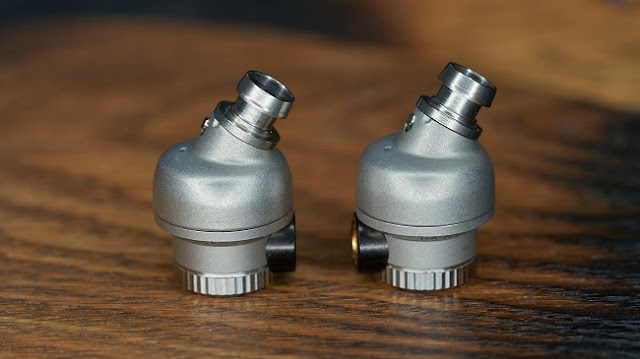
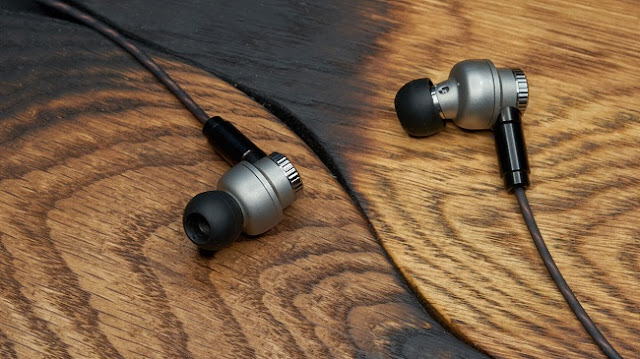
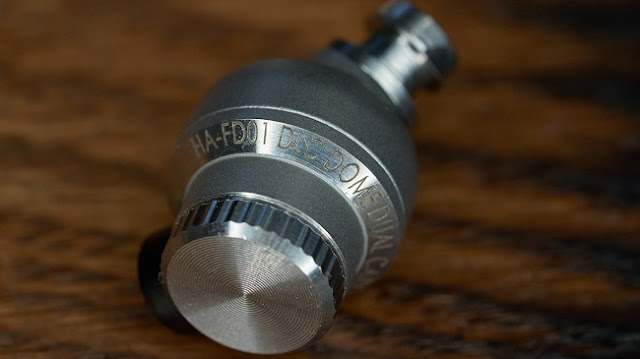
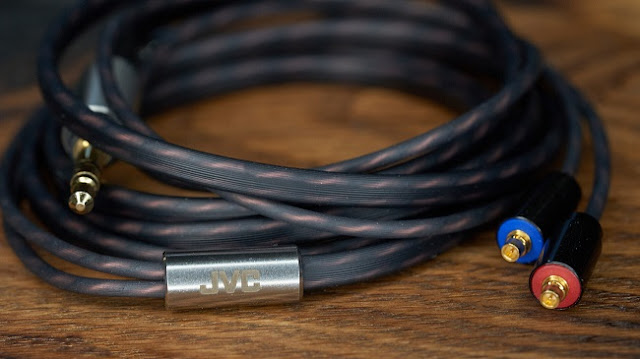


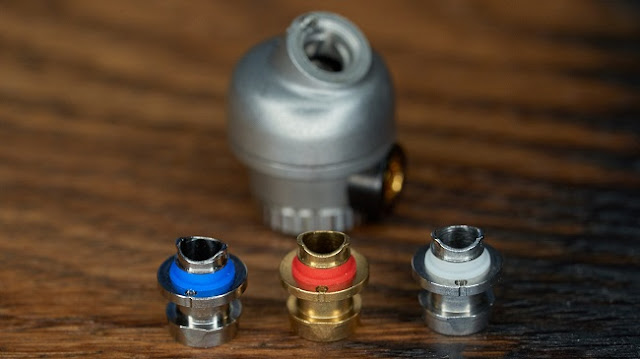
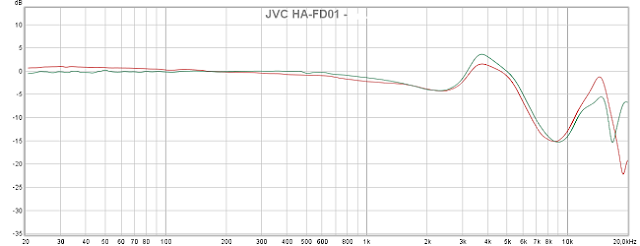






.jpg)



.jpg)



0 Comments